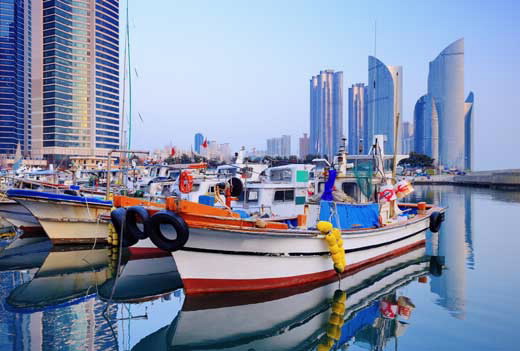Philanthropists Bill and Melinda Gates pitched an optimistic future for the world’s poor in their annual letter of 2014, arguing against three myths that, according to them, hurt efforts to bring people out of poverty, save lives and improve living conditions. The co-chairs of the world’s largest charitable foundation sought to dispel false notions that poor countries are doomed to stay poor, that foreign aid is wasteful and that saving lives will cause overpopulation.
“All three reflect a dim view of the future, one that says the world isn’t improving but staying poor and sick, and getting overcrowded,” Bill Gates writes. But, “by almost any measure, the world is better than it has ever been. People are living longer, healthier lives. Many nations that were aid recipients are now self-sufficient. You might think that such striking progress would be widely celebrated, but in fact, Melinda and I are struck by how many people think the world is getting worse. The belief that the world can’t solve extreme poverty and disease isn’t just mistaken. It is harmful”.
Myth One: Poor countries are doomed to stay poor
“I’ve heard this myth stated about lots of places, but most often about Africa. A quick Web search will turn up dozens of headlines and book titles such as ‘How Rich Countries Got Rich and Why Poor Countries Stay Poor.’ Thankfully these books are not bestsellers, because the basic premise is false. The fact is, incomes and other measures of human welfare are rising almost everywhere, including in Africa”, says Bill Gates in the letter.
“I was born in 1955 and grew up learning that the so-called First World was well off or “developed.” Most everyone in the First World went to school, and we lived long lives. We weren’t sure what life was like behind the Iron Curtain, but it sounded like a scary place. Then there was the so-called Third World—basically everyone else. As far as we knew, it was filled with people who were poor, didn’t go to school much, and died young. Worse, they were trapped in poverty, with no hope of moving up. The statistics bear out these impressions. In 1960, almost all of the global economy was in the West. Per capita income in the United States was about $15,000 a year (that’s income per person, so $60,000 a year for a family of four.) Across Asia, Africa, and Latin America, incomes per person were far lower. Brazil: $1,982. China: $928. Botswana: $383. And so on”, he continues.
But the change is posible, and Gates uses Mexico as an example: “Years later, I would see this disparity myself when I traveled. Melinda and I visited Mexico City in 1987 and were surprised by the poverty we witnessed. There was no running water in most homes, so we saw people trekking long distances by bike or on foot to fill up water jugs. It reminded us of scenes we had seen in rural Africa. The guy who ran Microsoft’s Mexico City office would send his kids back to the United States for checkups to make sure the smog wasn’t making them sick.Today, the city is mind-blowingly different. Its air is as clean as Los Angeles’ (which isn’t great, but certainly an improvement from 1987). There are high-rise buildings, new roads, and modern bridges. There are still slums and pockets of poverty, but by and large when I visit there now I think, “Wow, most people who live here are middle-class. What a miracle.”
So the easiest way to respond to the myth that poor countries are doomed to stay poor is to point to one fact: They haven’t stayed poor. Many—though by no means all—of the countries we used to call poor now have thriving economies. And the percentage of very poor people has dropped by more than half since 1990, he argues.
Gates is optimistic enough about this that he is willing to make a prediction. “By 2035, there will be almost no poor countries left in the world. (I mean by our current definition of poor.) Almost all countries will be what we now call lower-middle income or richer. Countries will learn from their most productive neighbors and benefit from innovations like new vaccines, better seeds, and the digital revolution. Their labor forces, buoyed by expanded education, will attract new investments. A few countries will be held back by war, politics (North Korea, barring a big change there), or geography (landlocked nations in central Africa). And inequality will still be a problem: There will be poor people in every region.
But most of them will live in countries that are self-sufficient. Every nation in South America, Asia, and Central America (with the possible exception of Haiti), and most in coastal Africa, will have joined the ranks of today’s middle-income nations. More than 70 percent of countries will have a higher per-person income than China does today. Nearly 90 percent will have a higher income than India does today. It will be a remarkable achievement. When I was born, most countries in the world were poor. In the next two decades, desperately poor countries will become the exception rather than the rule. Billions of people will have been lifted out of extreme poverty. The idea that this will happen within my lifetime is simply amazing to me.”
Myth Two: Foreign aid is a big waste
“You may have read news articles about foreign aid that are filled with big generalizations based on small examples. They tend to cite anecdotes about waste in some program and suggest that foreign aid is a waste. If you hear enough of these stories, it’s easy to get the impression that aid just doesn’t work. It’s no wonder that one British newspaper claimed last year that more than half of voters want cuts in overseas aid. These articles give you a distorted picture of what is happening in countries that get aid”, says Gates. “I worry about the myth that aid doesn’t work. It gives political leaders an excuse to try to cut back on it—and that would mean fewer lives are saved, and more time before countries can become self-sufficient.
He argues that, although there is no perfect program, “broadly speaking, aid is a fantastic investment, and we should be doing more. It saves and improves lives very effectively, laying the groundwork for the kind of long-term economic progress I described in myth #1 (which in turn helps countries stop depending on aid). It is ironic that the foundation has a reputation for a hard-nosed focus on results, and yet many people are cynical about the government aid programs we partner with.”
Myth Three: Saving lives leads to overpopulation
“Going back at least to Thomas Malthus, who published his An Essay on the Principle of Populationin 1798, people have worried about doomsday scenarios in which food supply can’t keep up with population growth. As recently as the Cold War, American foreign policy experts theorized that famine would make poor countries susceptible to Communism. Controlling the population of the poor countries labeled the Third World became an official policy in the so-called First World. In the worst cases, this meant trying to force women not to get pregnant. Gradually, the global family planning community moved away from this single-minded focus on limiting reproduction and started thinking about how to help women seize control of their own lives. This was a welcome change. We make the future sustainable when we invest in the poor, not when we insist on their suffering”, writes Melinda Gates.
To read the letter, follow this link.




